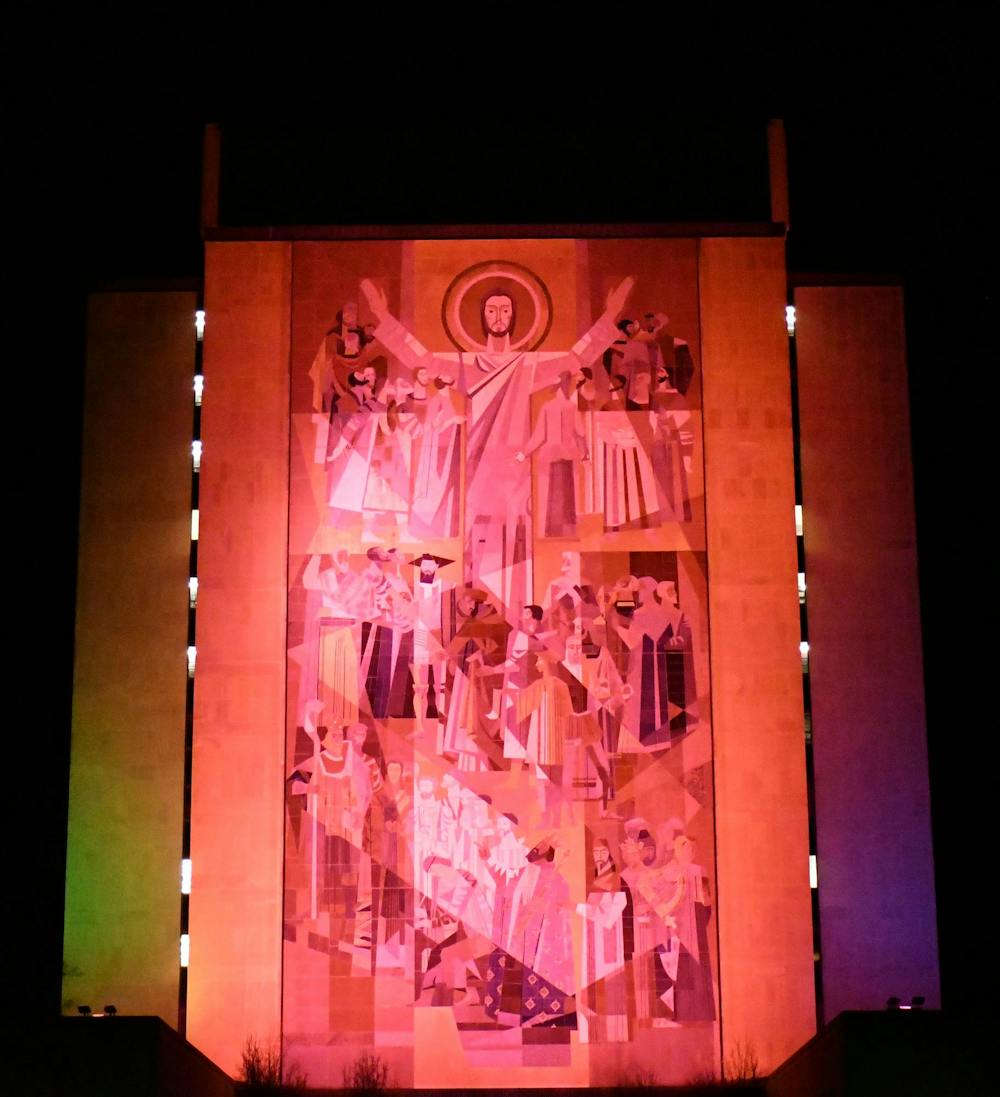On the last day of February, the University observed Rare Disease Day. A host of events including patient testimonials, research panels and faculty presentations were organized to promote the day and provide a space to encourage further study into rare diseases.
The events were championed by Notre Dame’s Boler-Parseghian Center for Rare and Neglected Diseases. According to the center’s website, the day is observed in order to “raise awareness for rare diseases and improve access to treatment and medical representation for individuals with rare diseases and their families.”
One of the presenters was Dr. Stephanie Ware, chair of Indiana University’s medical and molecular genetics department. Ware later described her specific focus on cardiovascular genetics and the role that they play, among other factors, in identifying rare diseases.
“Many of the patients that we see in genetics have a rare disease and clinical geneticists play a diagnostic and management role in the care of these patients,” Ware said. “I have a specific interest in cardiovascular genetic disorders and in that capacity I see patients with a variety of rare disorders that may involve their heart.”
Many other universities were represented in the events, including Arizona State University, Rush Medical College and the University of Oxford.
On Thursday, a reception for rare disease patients and their families was held in the galleria of Jordan Hall of Science. A collection of dining tables were neatly dressed and a buffet was prepared to welcome incoming guests.
The reception was organized by Barbara Calhoun and Katrina Conrad, who are, respectively, the director and program manager of the Patient Advocacy Initiative on campus. The initiative is primarily responsible for running the minor in science and patient advocacy, which educates students on identifying rare diseases and finding available treatments.
Calhoun later explained some of the major changes which Rare Disease Day has undergone since taking over as director in 2014.
“We have continued to expand this program to include involvement with patient families and students," Calhoun said. “With the start of the minor in science and patient advocacy in 2021, the program has gained momentum. By joining the international community in the Light Up for Rare event, we started lighting up the Word of Life mural last year.”
Near the end of the reception, Calhoun gave a brief speech in order to give thanks to the many people who helped make the event a success and highlight students who participated in the minor or made a difference in rare disease research.
In one case, Calhoun told a story which was relayed to her by a former student while working as an Emergency Medical Technician (EMT).
Calhoun explained that the student had gotten a call from a family who was taking care of a rare disease patient. When EMTs arrived, the parents struggled to explain the nature of their child’s condition to the student.
However, Calhoun said, her student had researched and studied the condition.
“And so she went to the mom and said, ‘I do understand what you're talking about. And I understand some of the complications that occur with this condition and how that could affect the care that we give,’” Calhoun said. "She said she could not express both the pride and excitement she felt when she saw the relief the family members had.”
After the reception, patients, their families and dozens of students made their way to Hesburgh Library. White bags decorated for a specific patient or rare disease were positioned along the reflecting pool in front of Touchdown Jesus. There, the guests participated in a prayer service given by Fr. Peter McCormick.
At sunset, the mural was lit green, red and blue in accordance with #LightUpForRare, a movement to display the colors at 7 p.m. local time around the world in solidarity for rare diseases.










